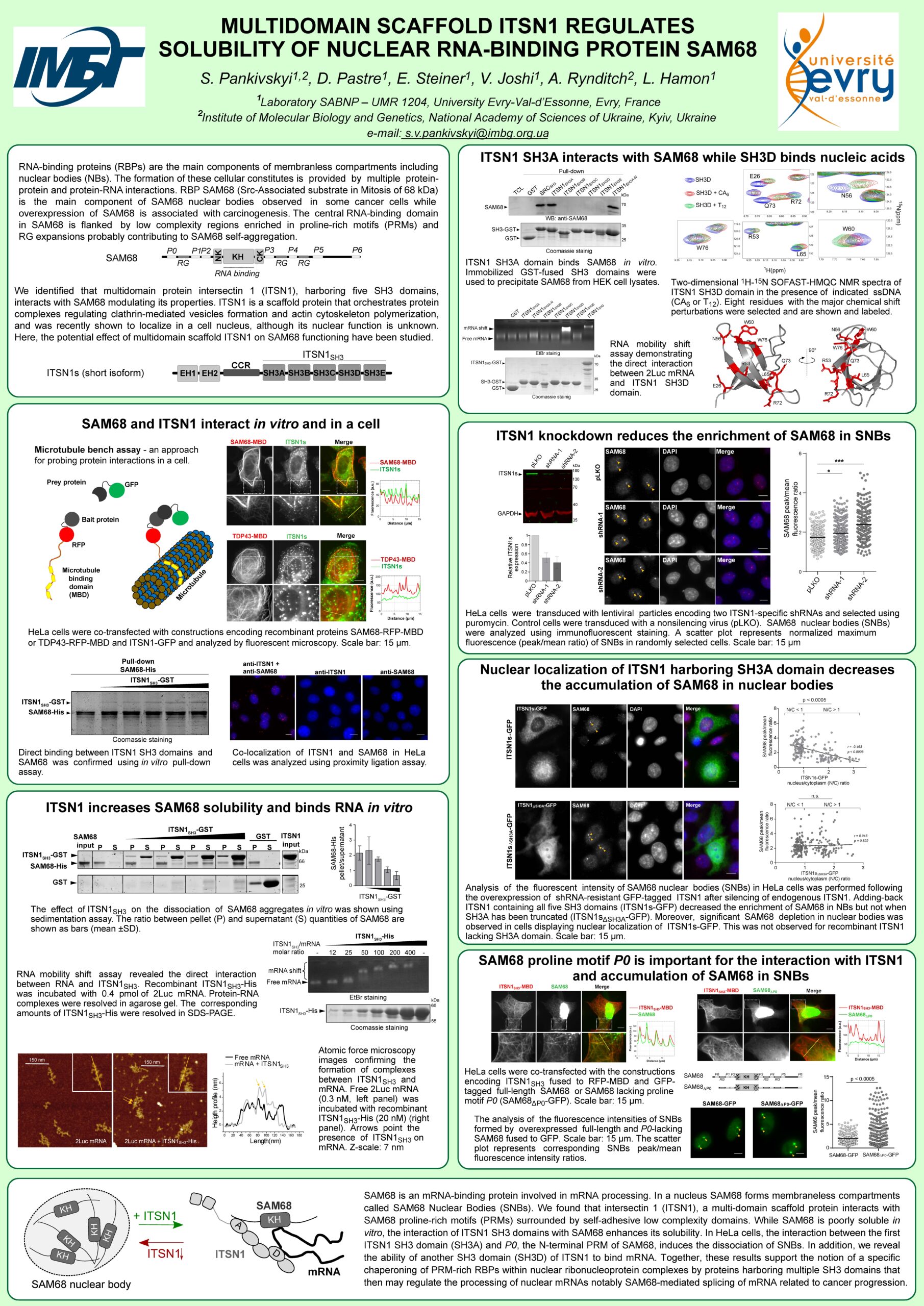Genome Organization & Nuclear Function, Cold Spring Harbor Laboratory
The Virtual Genome Organization & Nuclear Function meeting (April 28 – May 1) was organized by the Cold Spring Harbor Laboratory, NY, USA. Although the meeting was changed into the virtual on-line format due to the COVID-19 situation, the organization of the talks and poster session was at a high level and enabled comfortable, interesting, and productive communication between the participants, as well as members of organizing committee.
The oral sessions were based on the use of “Zoom” that enabled a high-quality presentation of the results of the selected speakers. Poster session used “Slack” where all posters were presented. Both oral and poster sessions were accompanied with general and personal discussions in virtual chats provided by “Zoom” and “Slack” services. Overall, it was very comfortable and interesting to work with posters and oral talks presented by researchers from all over the world. Lots of talented young scientists from the USA, Canada, France, Germany, Austria, Switzerland, Sweden, Israel, China, and Singapore presented their works.
The meeting was mostly based on the structure, organization, and functions of genomes. The conference sections discussed nuclear architecture, gene expression, as well as developmental and pathological aspects of chromatin structure and regulatory processes. The recent advances in the research of molecular and cellular details of the nuclear organization have been presented. Much attention was given to long noncoding RNAs as non-canonical but important and moonlighting regulators of nucleus-specific processes. Moreover, one of the sections was related to the recent technologies applied to the studies of genomes, including advances in FISH, CRISPR, TSA-Seq, Hi-M, and Hi-C methods.
Overall, it was a great pleasure to present my work related to nuclear non-membranous organelles and liquid-phase transitions at this high-quality meeting. In addition to fundamental and practical aspects of the research linked to the nucleus organization, numerous research post-doc positions available in the USA and Europe were introduced. As a result, the meeting helped me to broaden my outlook on the problems of the nucleus, chromatin, and genome organization.
I would like to thank the US-Ukraine Foundation Biotech Initiative that provided an opportunity for me to participate in the high-level virtual meeting.
-Serhii Pankivskyi, Researcher, Department of Functional Genomics, Institute of Molecular Biology and Genetics NAS Ukraine


